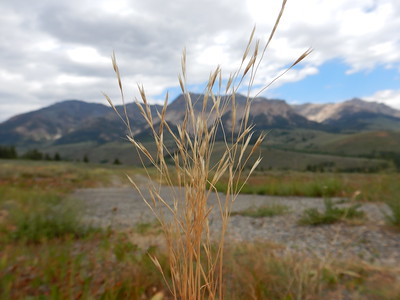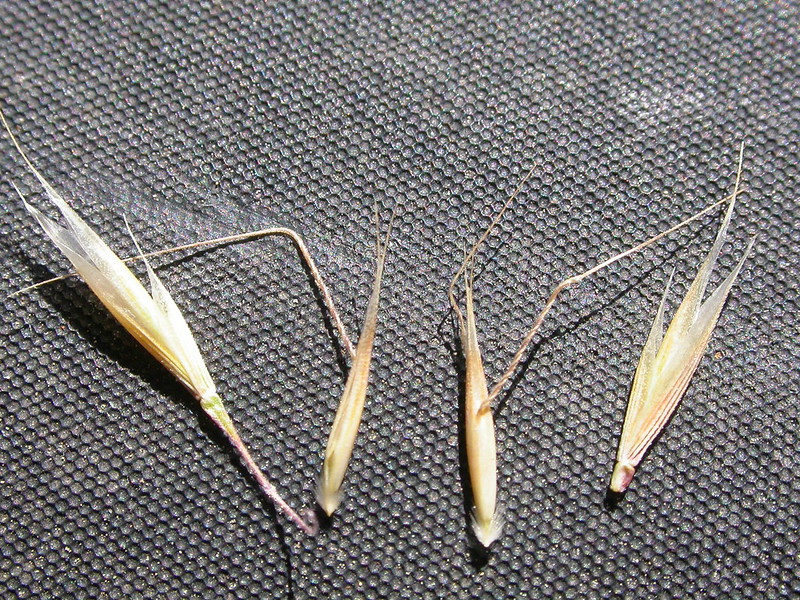North African Grass

North African Grass
(Ventenata dubia)
Priority: - Prevent / EDRR
Tags: Terrestrial | EDRR
Identification and Reproduction
Identification:
- North African grass is an annual grass that grows between 10 to 45 cm tall.
- Stems are long, thin, branching and wiry.
- Leaf blades appear rolled in and are narrow, with long ligules.
- This plant has reddish-black nodes between May and June.
- Inflorescence are open, slender and branches bear spikelets at the ends of stems. The upper flower has an extended wavy and sometimes bent awn about 1.5 cm long.
Reproduction:
- Reproduces only by seed.
- It produces from 15 to 50 seeds per plant.
- Long seed awns allow for attachment onto fur and objects.
- Seeds are dispersed by livestock, farm equipment, vehicles and contaminated hay and grass seed mixtures.
Habitat & Ecology
- Invades perennial grasslands, rangelands, hay fields, roadsides, railways, riparian corridors and other disturbed sites.
- Typically grows in clay and clay-loam soils that are shallow and rocky.
- Currently, it is only found in Metro Vancouver region.
Impacts
Social:
- Reduces available forage opportunities for livestock.
- Decreased hay, Kentucky bluegrass, alfalfa, winter wheat production. It has even reduced yields by nearly 50-75% within several years.
- North African grass is unpalatable to livestock.
Ecological:
- Since this plant has a shallow root system it increases erosion.
- Displaces native vegetation and changes the plant community. These changes result in a change in insect abundance, resulting in foraging loss.
Management
Prevention is a high priority for this species.
- Learn to identify this plant and report any sightings.
- Maintain a diverse and healthy stand of perennial plant species to reduce the introduction of North African grass.
- Purchase and plant certified, clean seed mixtures.
- Be cautious of imported grass seed mixtures, be sure to check seed labels.
- Clean clothing, pets, equipment and vehicles before leaving infested sites.
Mechanical/Manual Control:
- These plants can be hand-pulled as they grow from shallow roots. It is feasible for small patches but it can still be labour intensive.
- Mowing is only recommended prior to seed set and before soils dry out.
Resources
Download BC's Invasive Species Alert for North African grass here.
Header photo (Matt Lavin).




